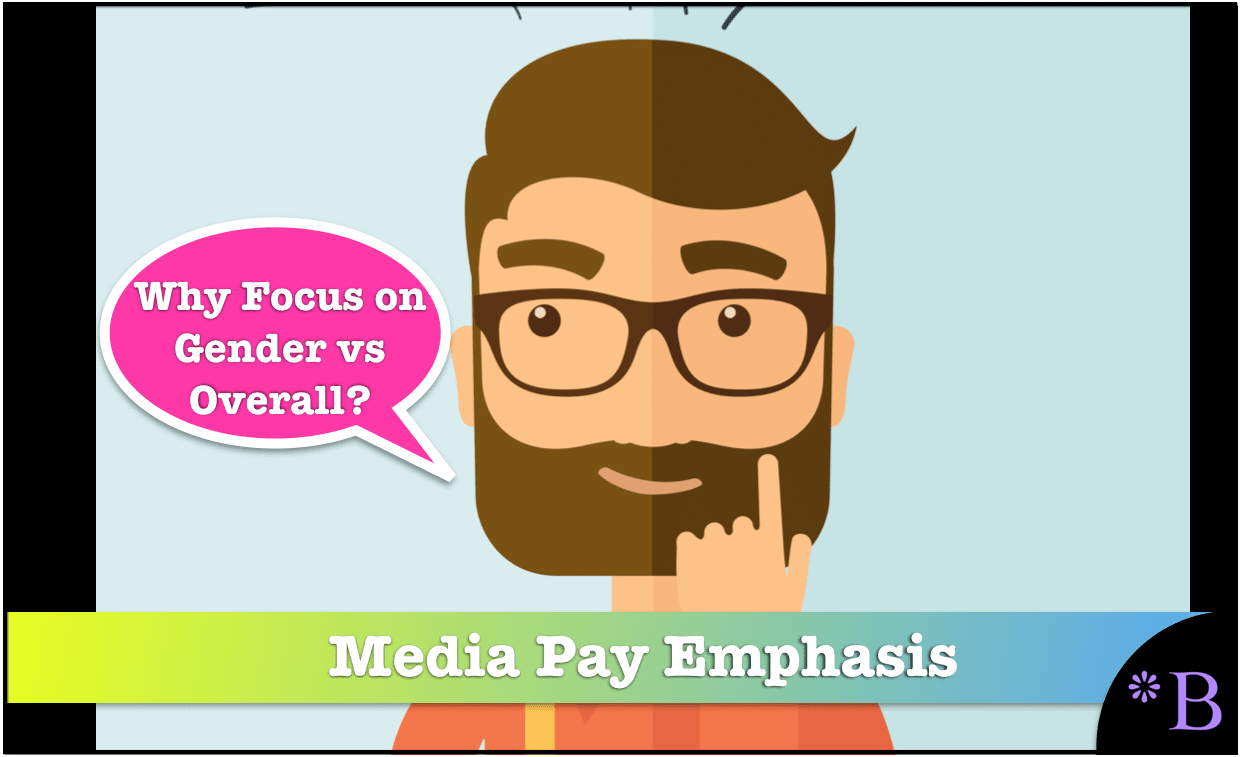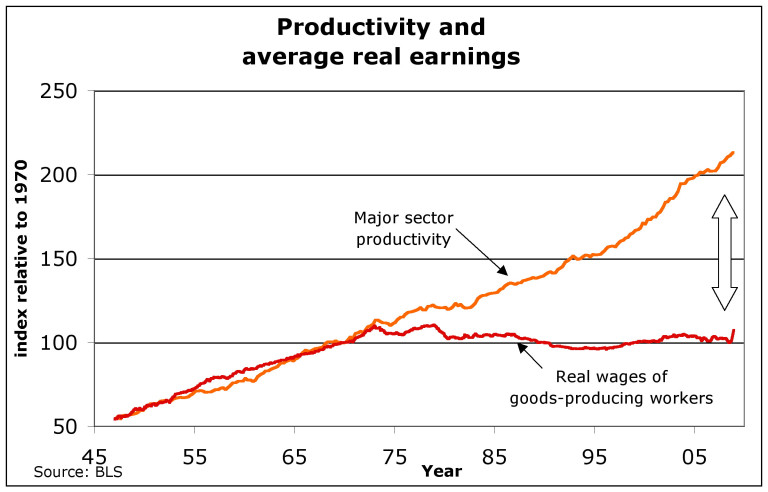Why the Gender Pay Gap is Discussed But Not Overall Pay
Executive Summary
- The supposed gender pay gap is widely covered in the media, while the overall pay level isn’t.
- We explain why.

Introduction
This chart below is never shown in any of the major media outlets. The chart tells a very important story.

In the US, wages stopped growing in roughly 1970, even though productivity continued a rapid increase. Why? Each year the population became more educated. However, education could not counteract the effect of the decline in unionization, significantly reducing the bargaining power of workers.
If the US had the same education level as in 1970 (far lower) but had maintained its unions, it appears that as wages were tracking productivity up until 1970, US wages could be twice what they are now.
Instead, all of that productivity was placed into the pockets of the wealthy.
What Pay Topic is Covered in the Media?
Interestingly this topic is barely discussed in the media, but what is presented is the supposed pay gap between men and women in the US, which is often quoted at around 23% (that is a woman will make 77% of what a man does in the US for the exact same job). This pay gap is an erroneous conclusion from simplistically tallying all compensation for men and women without accounting for the jobs they do.
This would be like saying there is a wage gap between more experienced workers and less skilled workers and then stating the reason must be discrimination. It would not account for the more senior workers being in more senior positions.
When told this, the topic is often changed to “the real question is why women’s work is not as valued as men’s,” which is an entirely different question and means the person proposing the gender wage gap is mispresenting the problem. The question of why some jobs are paid or “valued” more than others is a far bigger question than the jobs that tend to be occupied by men versus women. If one is questioned on the evidence for their assertion, it is unethical to change the framework of the problem.
This explains the myth of the wage gap.
As does this video.
Jobs That Extract More from the Economy in Compensation than They Add in Value
And on this topic of pay equity, studies by the New Economics Foundation demonstrate that Wall Street jobs actually parasitize the economy, and the adjusted wages should be negative. The groups that have the highest value add, like those that clean hospitals (thus preventing infection), end up with some of the lowest wages.
Our society has decided to pay Lebron Jaymes $36 M a year to put a ball in the basket. Our society seems satisfied with Larry Ellison having a net worth $70 B. So clearly, there is quite a lot of money going to people who don’t deserve it. Yet, how often is the overpayment in society (be it male or female even discussed in the media?)
The Real Reason the Gender Pay Gap Discussions Are Allowed in the Media
You can always tell the unimportant issues because they are discussed in the media. The media in the US is consolidated and owned by just a few companies. They are the opinion shapers and determine what “matters” and what doesn’t. And what matters is what supports the top tier of society, as they own the media entities.
The reason the gender pay gap receives so much coverage is that the elite interests consider the subject safe. And beyond this, they prefer the discussion because it is a distraction from the real issues that the elite do not want to be covered in the unionization issue and the executive compensation issues. Those are serious issues, and therefore it is not to be discussed.
Even if the gender pay gap were 100% accurate, it would be a secondary issue to the issue of the decline of unionization.
How Women Reduce Men’s Compensation
One factor also not discussed is how with women having entered the workforce in greater numbers, this has depressed the wages of men. It creates far more available workers, and with increased supply, this produces a strong downward pressure on wages. This is not working in the US, as 1/2 of the population lives with very little savings.
Notice, the coverage of the increase in inequality in the US leaves out the large increase in the supply of workers from women increasing their worker participation. Even with this increase in available workers, US firms continue to push for hundreds of thousands of foreign workers to continue to be allowed into the country, combined with factors like automation, outsourcing manufacturing, and IT services overseas, and information technologies place ever-increasing pressure on wages.
This historical explanation of feudalism depends upon an oversupply of labor. With the combination of factors listed above, we are recreating the conditions of feudalism.

This is why Joel Kotkin wrote the book Neo Feudalism. This what the industrialized world is moving to — with the US leading the way.
There is very significant evidence that the management of media entities coach their anchors on what to ask so that it is consistent with the interests of the owners. This video is on an unrelated topic, but it shows an anchor reacting to a claim made by a British politician that they were pressured by “someone” to promote war. The anchor does not ask who urged this politician (it is rather obviously the US) but instead asks if the politicians “feel they are enabling” Russians.
The anchor states, “we are in an information war with Russia.”
The war in Syria is between the US and Russia, with the US using and funding Islamic fighters versus Russian backed Assad. This broadcast is from the UK. How is the UK in “an information war with Russia” on the topic of Syria? Is the UK simply a puppet of the US? The logic presented by the anchor in this segment seems to indicate this is the case. That topic would seem like it would justify its own news segment.
Coaching News Anchors
The only way this could have happened is if the anchor has been coached to do this. If these anchors want to keep their job, they will perform the interviews precisely as they are instructed. These instructions are filtered down to them through ownership.
This means the journalist is not free in any intellectual sense but must reflect the interests of the owners of the station. If this is true, then the interviews, who are brought on, who isn’t, the line of questioning are being designed not by a focus on what is true but instead based upon a planned agenda.
For those interested in a detailed explanation, see the above video. It is not critical to understanding the topic of compensation coverage but is a good background.
Conclusion
Major media outlets are own by and reflect the interests of hiring companies.
For this reason, they do not direct their media entities to cover topics that relate to how much money is pushed from employees to employers. The media entities, therefore, cover topics that have nothing to do with the division of value between employees and employers but instead focus on the division of value between the different employees.
References
This video shows how the work market changed for women in the US, and how it compared to other countries.